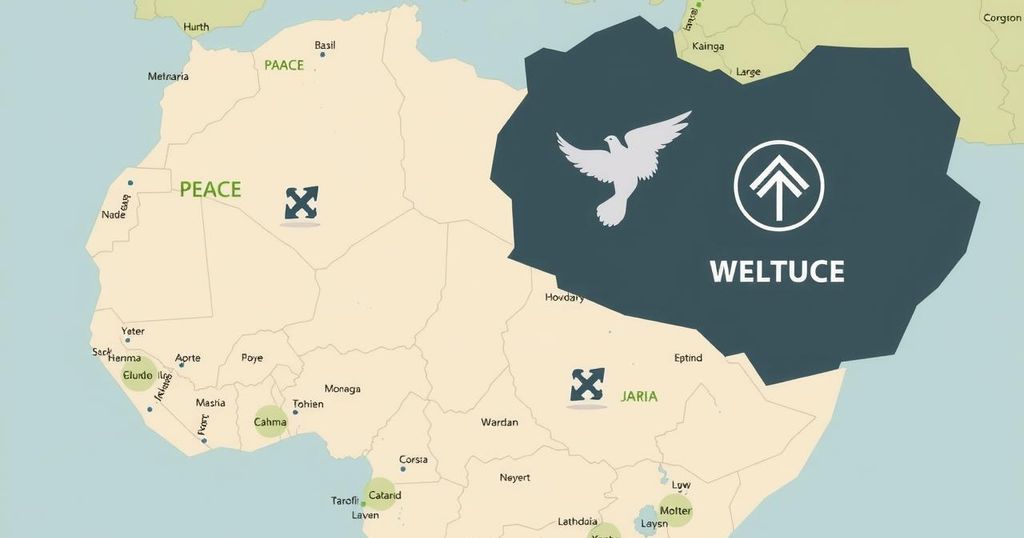World news
ABU BAKR AL - BAGHDADI, ABU MOHAMMED AL - GOLANI, AHMAD AL - SHARAA, ASIA, ASSAD, BASHA, BASHAR AL - ASSAD, CIVIL WAR, CONFLICT, DAMASCUS, EUROPE, EUROPE/ASIA, GAZA, GAZA STRIP, HAYAT TAHRIR AL - SHAM, HEZBOLLAH, IRAN, ISLAMIC REPUBLIC, ISLAMIC STATE MILITANT GROUP, ISRAEL, MIDDLE EAST, MOSCOW, RUSSIA, SANCTIONS, SHA, SHARAA, SHIITE ISLAM, SYRIA, TEHRAN, UKRAINE, WAR
Daniel O'Connor
0 Comments
Understanding Syria’s Complex Conflict: Fourteen Years of Civil War
This article examines the implications of the ongoing civil war in Syria, noting that it has been fourteen years since its inception. It highlights the recent fall of President Bashar al-Assad and the rise of interim President Ahmad al-Sharaa, alongside persisting violence and sectarian struggles. Foreign influences and the risks posed by ISIS further complicate Syria’s evolving political landscape.
Fourteen years have passed since protests erupted in Syria, leading to a multifaceted civil war that continues today. The recent anniversary reflects a significant shift in power; President Bashar al-Assad has been ousted after 25 years of leadership. His successor, Ahmad al-Sharaa, also known as Abu Mohammed al-Golani, previously a top figure in the Islamic State, now leads as the interim president amid ongoing violence and struggles for control.
Sharaa’s rise to power comes after Assad’s swift ousting, revealing the fragility of the regime and its supporters. Iran and Russia, traditionally Assad’s allies, are currently preoccupied with conflicts elsewhere, which hampered their ability to support him effectively during this critical moment. The new rule has been accepted by many, including members of Assad’s Alawite sect; however, brutality persists.
Violence surged with Assad loyalists launching ambushes against the interim government, leading to significant civilian casualties, particularly among Alawites. Reports indicate approximately 1,400 civilian deaths across Hama and Homs provinces, reflecting severe sectarian violence. This development poses a critical challenge for Sharaa, testing his commitment to a pluralistic government and the management of diverse rebel factions.
International responses have varied, with both Iran and Russia condemning the violence but employing different strategies. While Iran has lost influence and witnessed the rise of new resistance groups, Russia maintains its military presence and continues negotiations with Sharaa’s administration.
The Syrian Democratic Forces (SDF) have also played a pivotal role, engaging with the new government, despite tensions with Turkey. Kurds and Alawites, both significant minorities, navigate their positions within a predominantly Arab Sunni population, with additional complexities arising from U.S. interests in the region.
In the backdrop of these developments, Israel remains focused on bolstering the Druze sect’s rights amidst tension with the interim government. Israel’s military actions in southern Syria aim to safeguard strategic interests, complicating the situation further as it seeks to influence local dynamics.
Despite the setbacks against ISIS in recent years, the extremist group retains insurgent capabilities, executing numerous attacks across Syria. Following Assad’s fall, incidences have surged, prompting increased U.S. military engagement against the remnants of ISIS and Al-Qaeda.
The interplay of differing factions, loyalists, and foreign influence creates a complex and volatile situation in Syria. Both internal and external stakeholders remain alert to changes, revealing ongoing conflicts and the potential for renewed violence as parties vie for control and security in a fractured landscape.
In conclusion, Syria’s ongoing civil war continues to evolve as significant shifts in leadership have occurred. The ousting of Assad has given rise to Ahmad al-Sharaa’s interim government, but violence remains prevalent, raising questions about the new administration’s effectiveness. With increasing sectarian conflicts and foreign interests at play, the situation in Syria remains precarious and complex, demanding close international scrutiny to mitigate risks and foster peace.
Original Source: www.newsweek.com




Post Comment